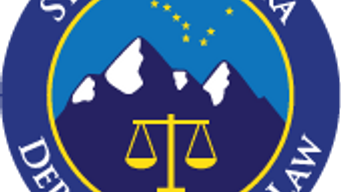The schools and conferences comprising the National Collegiate Athletic Association (NCAA) voted overwhelmingly to adopt a new constitution that will reduce the centralized role of the college sports governing body, providing each of the NCAA’s divisions with more authority over competitions and governance, while also shifting power to individual schools and conferences. The vote took place at an association-wide meeting at the NCAA convention in January, concluding a process that began in July 2021 but has roots in more than a decade’s worth of litigation. The results of the vote easily surpassed the two-thirds requirement for ratification.
Amateurism Simplified
The new, decentralized constitution simplifies the definition of “amateurism” and provides NCAA divisions with greater latitude when determining permissible benefits. Under the constitution, student-athletes “[m]ay not be compensated by a member institution for participating in a sport, but may receive educational and other benefits in accordance with guidelines established by their NCAA division.” The divisions will also have authority to manage rules enforcement, set the parameters for participation in championships, and set academic eligibility standards, including guidelines for the “commercialization of name, image or likeness” rights of student-athletes.
Uncertainty Lingers
The swift changes in NIL rules and lack of uniform federal guidance have created an atmosphere of uncertainty among schools, student-athletes and sponsors. The line that distinguishes compensating student-athletes for playing a sport from compensating those same athletes to use their NIL rights that have value primarily because they play a sport is difficult to discern. The legislation in the states that have enacted NIL rules do little to clarify the issue and the revised NCAA constitution doesn’t try. So schools, student-athletes and sponsors are wading into these murky waters with little sense of the perils that lie beneath the surface.
NIL Deals Under Review
Even before the changes to the NCAA Constitution, the NCAA suspended its long-standing rules prohibiting athletes from being paid for use of their NIL in the wake of the Supreme Court’s June decision in NCAA v. Alston. However, the reimagined role of the NCAA in the college sports landscape does not mean that the NCAA has abdicated its oversight responsibilities. The NCAA is reportedly investigating both Brigham Young University and the University of Miami for potential violations of pay-for-play prohibitions as a result of NIL deals. The investigations reportedly center on partnerships with the schools that provide compensation directly to all members of their respective football teams.
Team Deals Face Scrutiny
The NCAA’s initial examination of this dividing line appears to focus on team-wide deals. These deals present a major issue for brands, schools and student-athletes because the connection between the compensation and the fair market value of each student-athlete’s NIL rights is more difficult to justify. NCAA rules still prohibit pay-for-play agreements, meaning each NIL deal needs to be a fair exchange of services and rights for the monetary value being paid. Not every player on a given team has the same value, popularity, social media reach, and other external factors that play a part in determining the fair value of a student-athlete’s endorsement. If student-athletes are being compensated without regard to the value of their NIL rights, the NCAA might determine that they are simply being paid to be on the team.
Turbulence Ahead
The next year will be a critical period in defining the scope of NIL rights under a reconfigured NCAA. Schools and sponsors will continue to seek to innovate in an effort to both provide benefits to and extract value from student-athlete NIL rights. These efforts will continue to push boundaries that are difficult to define. At the same time, the NCAA divisions, conferences and schools will be left to grapple with the challenge of creating an understandable framework for NIL rights that provides clarity and lifts the cloud of scandal that has followed NCAA athletics for decades. The investigations underway are likely a precursor to future clashes over how to define this lucrative market.
The Bottom Line
- The NCAA’s revised constitution pushes governing authority down to its divisions, conferences and schools.
- The NCAA’s definition of amateurism has been simplified but leaves unresolved questions for student-athletes and sponsors.
- Team-wide NIL are the initial target of potential violations of “pay-for-play” rules.
- The boundaries of NIL deals will likely remain uncertain for the immediate future.





